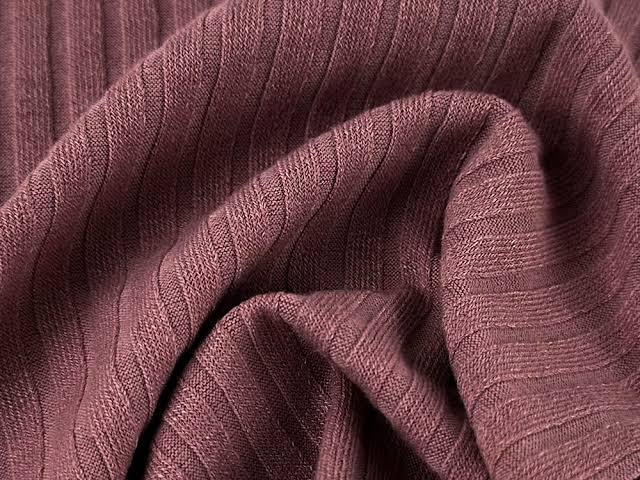
Rib Knits vs Jersey Knits: Understanding the Difference
Share
When it comes to knit fabrics, two types stand out for their popularity and versatility — rib knits and jersey knits. Both are staples in the world of apparel, offering stretch, comfort, and a variety of styling possibilities. Yet, their structures, textures, and performance differ significantly. Understanding the difference between rib knits and jersey knits can help you choose the right fabric for your designs or wardrobe.
What Are Knit Fabrics?
Unlike woven fabrics, which interlace threads at right angles, knit fabrics are created by interlooping yarns. This construction gives them natural elasticity, making them comfortable, flexible, and ideal for body-hugging garments.
Among the many types of knit fabrics, jersey knit and rib knit are the most widely used. While both share the stretch and softness that knits are known for, they differ in their structure and appearance.
What is Jersey Knit Fabric?
Jersey knit is the simplest and most common type of knit fabric. It’s made using a single set of needles that form loops in one direction, resulting in a fabric with a smooth surface on the front and a textured, looped surface on the back.
Key Characteristics of Jersey Knit
- Soft and Lightweight: Feels gentle on the skin and drapes well.
- Smooth on One Side: The front surface has a clean, flat appearance.
- Stretch: Offers good stretch across the width but less vertically.
- Prone to Curling: The edges tend to roll when cut, especially on the sides.
- Common Uses: T-shirts, dresses, leggings, and casual tops.
Because of its fluid drape and comfort, jersey knit is often used in everyday wear and activewear, providing a perfect balance between structure and flexibility.
What is Rib Knit Fabric?
Rib knit fabric is made by alternating knit and purl stitches, creating a series of vertical ridges or “ribs” along the length of the fabric. It uses two sets of needles, producing a fabric that looks the same on both sides.
Key Characteristics of Rib Knit
- Highly Stretchable: Offers excellent elasticity, especially across the width.
- Distinct Texture: Has visible vertical ribs that add depth and structure.
- Shape Retention: Returns to its original form after stretching.
- Soft and Durable: Comfortable against the skin yet more resilient than jersey.
- Common Uses: Necklines, cuffs, waistbands, fitted tops, and sweaters.
Rib knits are popular in garments that require snug fits and flexibility, making them ideal for body-hugging or stretch-sensitive areas.
In essence, jersey knit is ideal for soft, drapey clothing like tees and dresses, while rib knit is better suited for stretchy, form-fitting pieces that need to maintain their shape.
Choosing Between Rib and Jersey Knits
When deciding which fabric to use, consider the purpose and fit of the garment:
-
Choose Jersey Knit for:
- Flowy T-shirts, tank tops, and dresses.
- Lightweight, breathable outfits.
-
Garments that need comfort and flexibility without too much structure.
-
Choose Rib Knit for:
- Stretchy cuffs, collars, and hems.
- Fitted tops, activewear, and bodycon styles.
-
Pieces that require elasticity and durability.
Final Thoughts
Both rib knits and jersey knits play essential roles in modern apparel. While jersey knit is known for its softness and drape, rib knit stands out for its stretch and structure. Each fabric brings a unique character — one offers flow and flexibility, the other provides support and resilience.
Understanding their differences helps designers and consumers alike make smarter fabric choices, ensuring every piece feels just as good as it looks.
Whether you’re crafting a relaxed everyday tee or a fitted ribbed top, both these knit types embody the comfort and versatility that define modern fashion.
